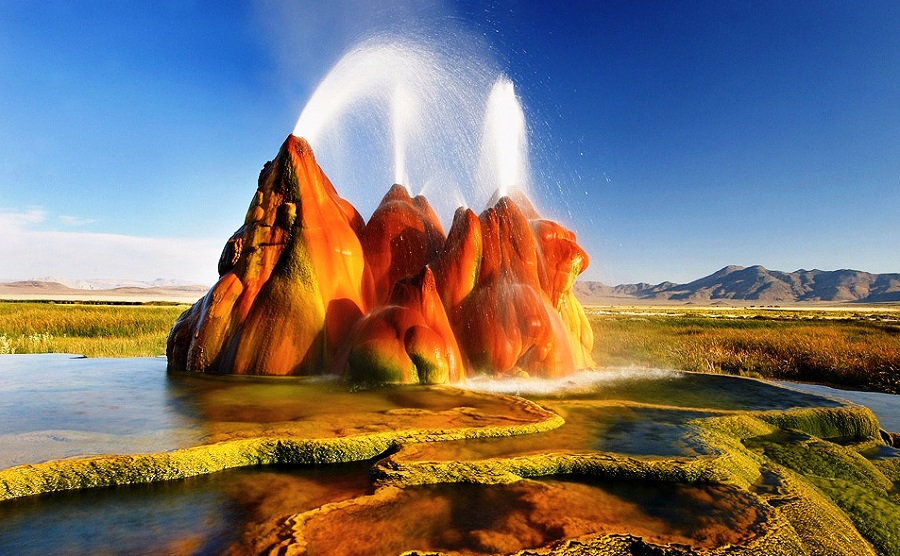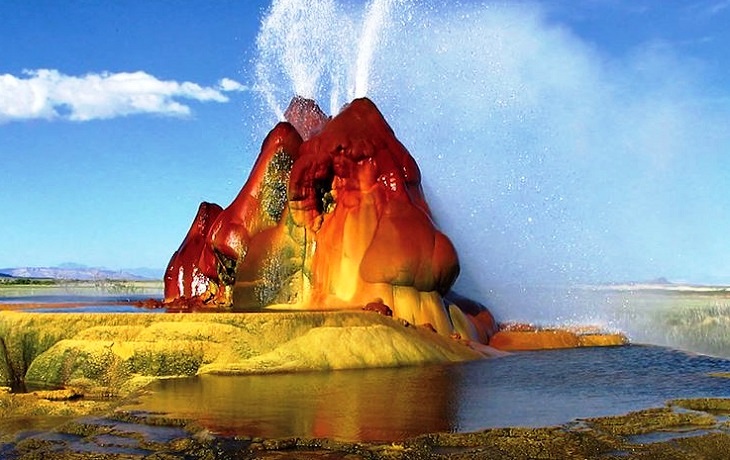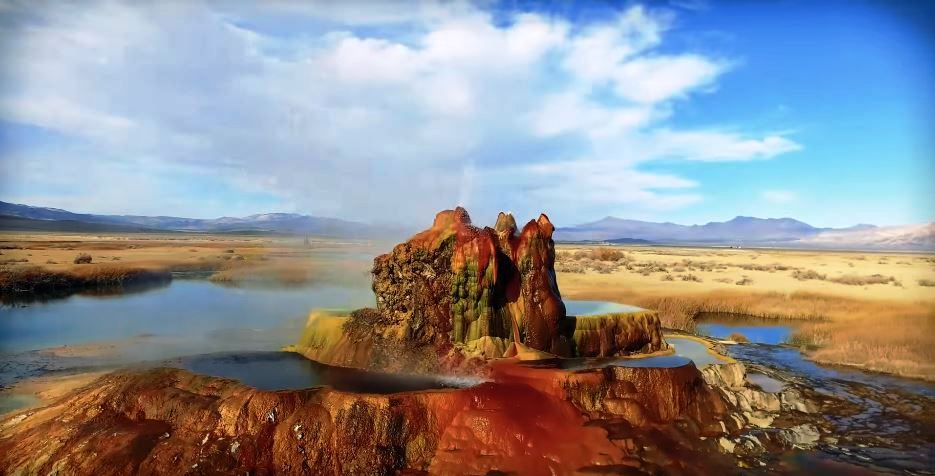Sometimes, suddenly such things are happened, which no one has ever thought in his dream. Something similar happened with a farmer living in Nevada of United States. He had a piece of farm that was in the barren land of the area. He decided to dig a pit there for farming. Since the level of water was very low at that place, there was a need to dig deep pit. He got success, but the water that came out from the hole was incredibly hot, over 200 degrees in fact. After seeing this, the farmer immediately evacuated the area and forgot about water. But over time, that hole of hot water gradually took a very beautiful shape which is now known as the Fly Geyser.
Fly Geyser is a small geothermal geyser located on private land in Washoe County, Nevada approximately 20 miles north of Gerlach. It is also known as Fly Ranch Geyser. It is located on the private Fly Ranch in Hualapai Flat, about 0.3 miles from State Route 34. Fly Geyser is approximately 5 feet high by 12 feet wide, counting the mound on which it sits. The source of the Fly Geyser field's heat is attributed to a very deep pool of hot rock where tectonic rifting and faulting are common. There are two additional geysers in the area were created in a similar way and continue to grow. The first geyser is approximately 3 feet and is shaped like a miniature volcano; the second is cone-shaped and is about 5 feet.
In 1964 a team came here with better drilling technology in order to create a successful well, but the water here was so hot that the work was immediately stopped. The team didn’t cap their drilling ventures properly and they created a small geyser. Actually the pressure of water coming out here is quite fast. This small geyser has grown at an incredible rate creating something that nobody expected. Due to the existing minerals in the water, a colorful mountain is formed here, which constantly releasing hot water reaching 5 feet in the air.
In other words, it can be said that the Fly Geyser was accidentally created during well drilling while exploring for sources of geothermal energy. The well may not have been capped correctly, or left unplugged, but either way, dissolved minerals started rising and accumulating, creating the travertine mound on which the geyser sits and continues growing. The geyser is made up of a series of different minerals, but its brilliant colors are due to thermophilic algae.
Fly Geyser is a small geothermal geyser located on private land in Washoe County, Nevada approximately 20 miles north of Gerlach. It is also known as Fly Ranch Geyser. It is located on the private Fly Ranch in Hualapai Flat, about 0.3 miles from State Route 34. Fly Geyser is approximately 5 feet high by 12 feet wide, counting the mound on which it sits. The source of the Fly Geyser field's heat is attributed to a very deep pool of hot rock where tectonic rifting and faulting are common. There are two additional geysers in the area were created in a similar way and continue to grow. The first geyser is approximately 3 feet and is shaped like a miniature volcano; the second is cone-shaped and is about 5 feet.
In 1964 a team came here with better drilling technology in order to create a successful well, but the water here was so hot that the work was immediately stopped. The team didn’t cap their drilling ventures properly and they created a small geyser. Actually the pressure of water coming out here is quite fast. This small geyser has grown at an incredible rate creating something that nobody expected. Due to the existing minerals in the water, a colorful mountain is formed here, which constantly releasing hot water reaching 5 feet in the air.
In other words, it can be said that the Fly Geyser was accidentally created during well drilling while exploring for sources of geothermal energy. The well may not have been capped correctly, or left unplugged, but either way, dissolved minerals started rising and accumulating, creating the travertine mound on which the geyser sits and continues growing. The geyser is made up of a series of different minerals, but its brilliant colors are due to thermophilic algae.

















0 comments:
Post a Comment